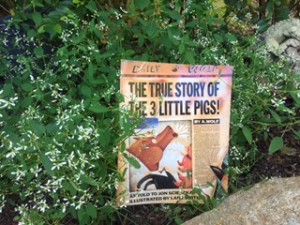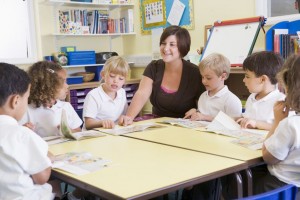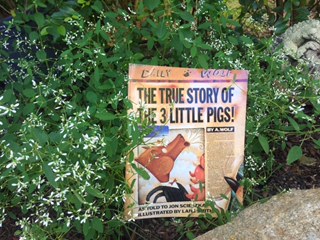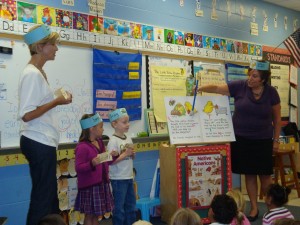The goal for any teacher is to gradually give responsibility more and more to students and this needs to be a scaffolded approach. The next stage in the Gradual release of responsibility is where teachers and students work together (We do it). Three reading procedures promoted in the First Steps in Reading (FSiR) Resource book can be used to assist in the teaching of reading: Language experience, Shared reading and Guided reading.
Connecting reading and writing is essential and the reading procedure of Language experience is perfect for combining the two. Field knowledge is built when students are involved in a shared experience such as an excursion or cooking.  This is an opportunity to take photos and have students orally rehearse what they have been doing. This experience then forms the basis for a jointly constructed text.
This is an opportunity to take photos and have students orally rehearse what they have been doing. This experience then forms the basis for a jointly constructed text.
The text is created by the whole class using their oral language and scribed by the teacher. Once revised and edited, the published text can then be used for future reading sessions and as a springboard for other reading activities, such a sequencing, sentence matching and cloze exercises.
Shared reading is exciting and interactive. All students can see the enlarged text, are able to observe a good reader in action (usually the teacher modelling strong reading behaviours) and have the opportunity to read along. Texts can be re-used several times but need to maintain the students’ interest and attention.
This whole class sharing can then lead to smaller groups which are differentiated according to extension, consolidation or knowledge. To add interest, I love using choral reading and readers theatre. There are so many texts that are already prepared and ready for these variations.
 The True Story of the 3 Little Pigs
The True Story of the 3 Little Pigs
The final reading procedure for the We do It stage is Guided reading. Guided reading enables teachers to support small groups of students who are using similar reading strategies and are reading texts of a similar level. Students should have individual copies of the text which is pitched at their instructional level. The text should provide a challenge but without being so difficult that students become disheartened, allowing practice of reading behaviours that have already been introduced. 
The teacher’s role is to guide or direct students to a section of a text whereby a focus question is set. Students make a prediction and then read the section silently. They are then encouraged to share and discuss their responses, ensuring they can substantiate their viewpoints using the text. This is also an opportunity to discuss reading strategies they may have employed to find the required information.This process is continued until the text or session is completed.
At the end of the guided reading session, time should be allocated for reflection. The text can then be made available for independent or home reading and practice activities can be developed that relate to the selected focus.


